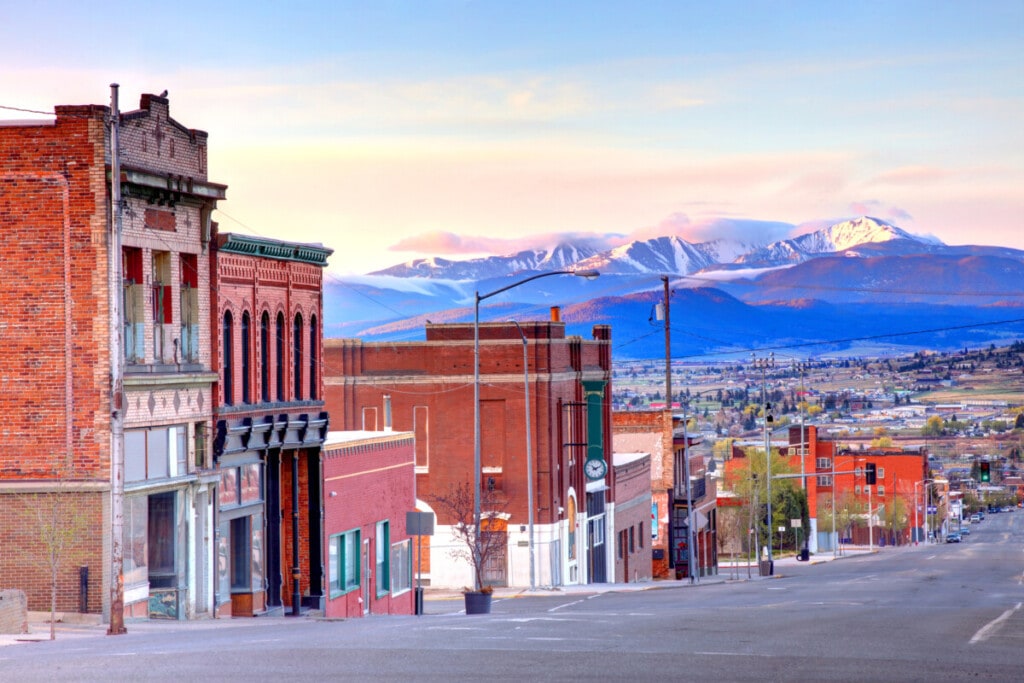10 Pros and Cons of Living in Montana

Living in Montana is an experience that immerses residents in the untamed beauty of the American West. The state is known for its majestic mountains like the Bitterroot Mountains, sprawling plains, tranquil lakes, and amazing national parks like Glacier, which captivates residents and visitors from all over. However, amidst the awe-inspiring beauty, Montana presents its own challenges—harsh winters, limited economic diversity, and the isolation of living in remote areas. So, is Montana a good place to live? Whether you’re looking for an apartment in Missoula, a home in Bozeman, or want to learn more about this state, this article has you covered. This Redfin article dives into the pros and cons of living in Montana so you can see if Big Sky Country is for you.
Interested in moving to Montana? Check out:
Homes for sale in Montana | Apartments for rent in Montana | Houses for rent in Montana
Quick Facts about Montana
Population
1,084,225
Median home sale price
$537,000
Average rent in Montana
$1,320
Largest cities in Montana
Billings, Missoula, Great Falls
1. Pro: Scenic beauty of the mountains and lakes
Montana’s scenic beauty is unparalleled for those fortunate enough to call it home. You’ll find majestic mountains, expansive plains, and crystalline lakes all over the state. The towering peaks of the Rocky Mountains, including the iconic Glacier National Park, offer breathtaking vistas that change with the seasons, from snow-capped splendor in winter to lush greenery in summer. The Big Sky Country lives up to its name, boasting endless expansive skies, and the picturesque landscapes aren’t confined to specific regions. From the serene beauty of Flathead Lake to the pristine wilderness of the Bob Marshall Wilderness Complex, residents find themselves surrounded by a natural wonderland that invites exploration and appreciation.
2. Con: Short growing season
With a climate characterized by late spring frosts and early fall freezes, the time available for cultivating crops and nurturing plants is notably limited. This condensed growing window requires strategic planning for farmers and gardeners, who must carefully select crops that can thrive in the relatively brief period between the last frost and the onset of winter. The brevity of the growing season can also impact the availability of locally grown produce, leading to a reliance on imports for fresh fruits and vegetables during certain months.
3. Pro: Peaceful lifestyle
Embracing a peaceful lifestyle is an inherent and cherished aspect of residing in Montana. The state’s low population density and vast expanses of unspoiled wilderness contribute to a tranquility that becomes a way of life. In small towns like Livingston and Whitefish, scattered across the landscape, residents find a respite from the hustle and bustle of urban living, fostering a sense of community and neighborly connection.
4. Con: Freezing winters
Montana’s enchanting landscapes come with a trade-off, notably in harsh winters that challenge its residents. The state experiences frigid temperatures and substantial snowfall, particularly in regions near the Rocky Mountains. The prolonged cold season can bring about logistical difficulties, from navigating icy roads to the potential for property damage caused by heavy snow loads. Severe weather conditions can impact daily routines, affecting commuting, outdoor activities, and even access to certain services in remote areas.
5. Pro: Outdoor recreation
The state’s diverse terrain, ranging from the rugged peaks of the Rockies to the vast expanses of rolling plains, offers an abundance of recreational opportunities. Residents revel in the thrill of hiking pristine trails, casting lines into clear mountain streams, and carving through powdery slopes in winter. Iconic destinations like Yellowstone National Park and Big Sky Resort are magnets for outdoor enthusiasts, providing year-round activities that cater to all skill levels. From the adrenaline rush of whitewater rafting on the Gallatin River to the serenity of camping beneath a blanket of stars in the Beartooth Mountains, Montana’s outdoor offerings are as varied as they are awe-inspiring. These natural treasures contribute to making places like Bozeman, Missoula, and Helena some of the best places to live in Montana.
6. Con: Summer wildfires
Picturesque summers, characterized by warm temperatures and clear skies, are tinged with the recurring threat of wildfires. The state’s vast landscapes, rich with forests and grasslands, become susceptible to wildfires due to dry conditions and occasional lightning strikes. These fire-prone regions witness the destructive force of wildfires, impacting not only the natural habitat but also posing a risk to residential areas. These summer blazes, exacerbated by climate factors, can lead to air quality concerns and temporary displacement for some communities.
7. Pro: No sales tax
A distinctive economic advantage that shapes the daily lives of Montanans is the absence of a statewide sales tax. This unique aspect contributes to a lower overall cost of living and influences how residents approach everyday transactions. Whether shopping for essentials or indulging in non-essential purchases, individuals in Montana are spared the additional percentage-based fees that accompany most retail transactions elsewhere.
8. Con: Sparse public transportation
Unlike urban hubs with robust transit systems, many areas in Montana lack comprehensive public transportation infrastructure. Residents often rely heavily on personal vehicles for commuting and daily activities, especially in rural and remote regions. Limited public transit services can pose challenges for those without access to a car, impacting their mobility and potentially leading to difficulties in reaching work, education, or essential services. Even college cities like Bozeman remain car-dependent, with a transit score of 21.
9. Pro: Affordable housing
The Montana housing market has seen a strong uptick in recent years, boasting a median sale price of $537,000, which surpasses the national median of $439,716. This figure reflects the surging demand for properties in the state, fueled by Montana’s natural beauty and the lure of its outdoor recreational opportunities. The median sale price not only underscores the desirability of Montana’s real estate market but also speaks to the state’s increasing popularity among homebuyers. Interestingly, even in larger cities like Great Falls, housing costs remain notably reasonable, standing at approximately 13% less than the national average.
10. Con: Isolated towns
The vast and rugged expanses of Montana, while contributing to its scenic beauty, also bring forth the aspect of isolation as a notable challenge for residents. The vast distances between communities can create a sense of seclusion in many areas, particularly those in the rural and less populated regions. Access to amenities and services may require considerable travel, and the limited social infrastructure can contribute to more challenges. Harsh winter conditions and the sparse population density further accentuate the sense of remoteness.
The post 10 Pros and Cons of Living in Montana appeared first on Redfin | Real Estate Tips for Home Buying, Selling & More.





